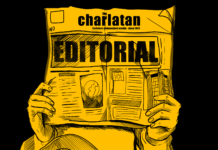In August 2019, Laurentian University added Anishinaabemowin to on-campus signs in order to recognize that the institution is located on Anishinaabe territory.
Adding trilingual signs is part of the university’s 2023 strategic plan to make the institution “the school of choice for northern, francophone, and Indigenous students,” according to Laurentian’s website.
Valerie Richer, chief of Atikameksheng Anishnawbek, located near Sudbury, told the CBC she was “personally really happy about it” and said it was a long time coming.
Adding Indigenous languages to recognize the nations on which Canadian post-secondary institutions stand is one way Canadian universities can contribute to mitigating the harm done over decades of attempts to eradicate Indigenous languages.
After the Truth and Reconciliation Commission’s (TRC) final recommendations were released in June 2015, Laurentian formed a Truth and Reconciliation Task Force to work on applying the educational recommendations, which included creating post-secondary programs in Indigenous languages.
In Maclean’s Magazine’s 2020 post-secondary rankings, Carleton ranked 12th and Laurentian ranked fourth in promoting Indigenous visibility in their respective categories. In a 2018 Maclean’s survey on promoting Indigenous visibility, Laurentian ranked seventh, while Carleton did not even make the top 10.
Universities across Ontario—including Carleton—should take a page out of Laurentian and other schools’ books, and continue to work on reconciliation on their campuses by applying the TRC’s recommendations and recognizing the land they stand on.
File photo.





